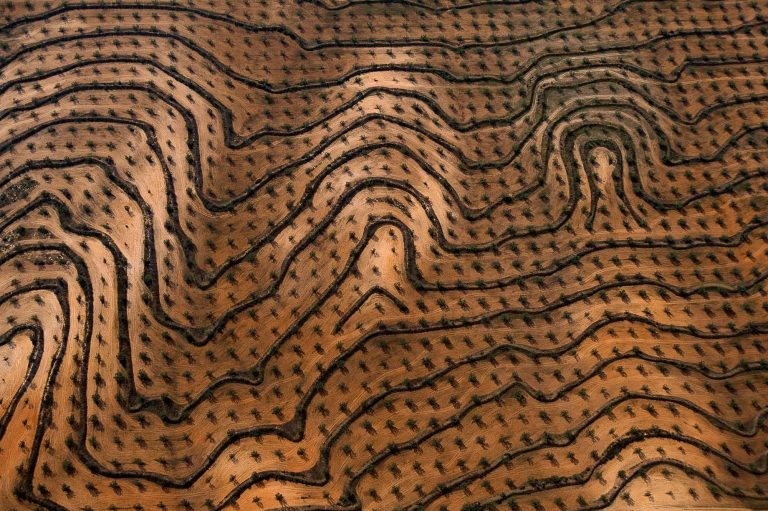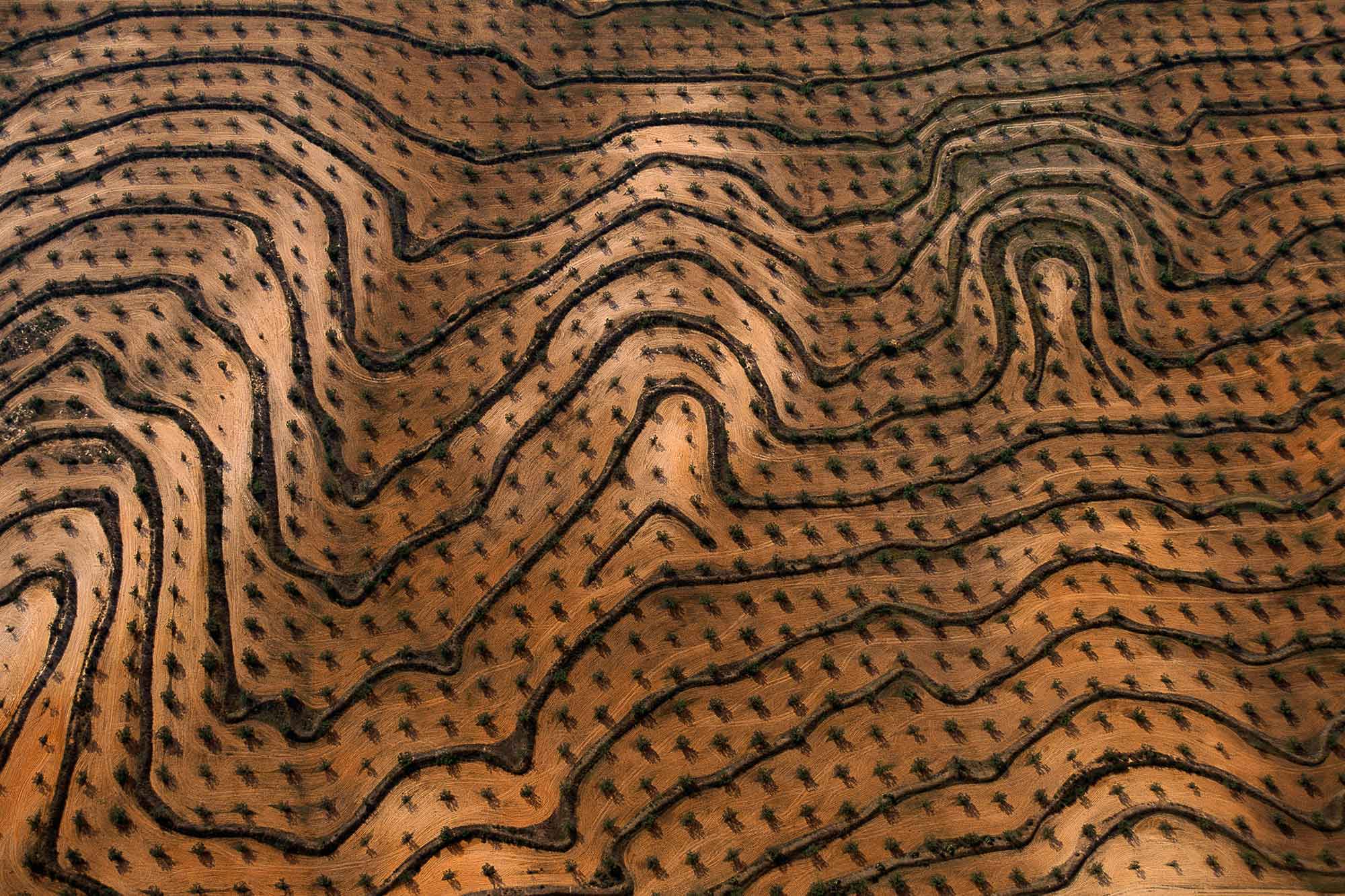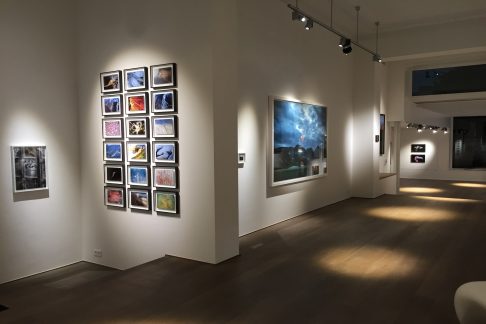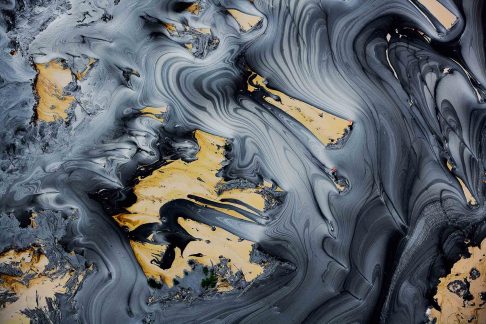These olive groves at the foot of the 4,250-foot-high (1,295 m) Jebel Zaghouan in northeastern Tunisia are planted in curved embankments to retain water and limit erosion, which viewed from above look like the lines on a relief map. A symbol of peace, the tree is native to the Mediterranean basin, where 90% of the planet’s olive trees grow. An olive tree can live as long as 1,000 years, producing 11 to 65 pounds (5 to 30 kg) of olives yearly. In the past its oil was used in small clay lamps, but it has been replaced by petroleum. Today we consume both table olives and olive oil, which is renowned for its dietary and medicinal properties and also used in cosmetics. The lands of the Mediterranean are the greatest olive producers and also the greatest consumers. The Greeks consume 18 litres of olive oil per person per year, and the Italians and the Spaniards 13 litres, compared to 1.4 litres a year in France and 0.6 litres in the United States.
THE PHOTO
Taken in 1997, It is a silver photography. His original slide is stored by the Yann Arthus-Bertrand Studio in Paris.
THE PRINT
Original work by Yann Arthus-Bertrand. The prints are made exclusively by the Yann Arthus-Bertrand Studio in Paris under the control of the artist himself.
Original Edition Signed and Numbered
Prints ordered without frames include a white border
- Format 1, 2 & 3 = 2 cm of white border around the image
- Format 4, 5 = 4 cm of white border around the image
- Format 6 = 5 cm of white border around the image
Digital print made by the Yann Arthus-Bertrand Studio. Canon IPF 9400 Ink-jet printer, pigmentary ink, printing on acid free 100% cotton fibre paper (Museo Silver Rag)
>> voir des tirages dans l’Atelier YAB




